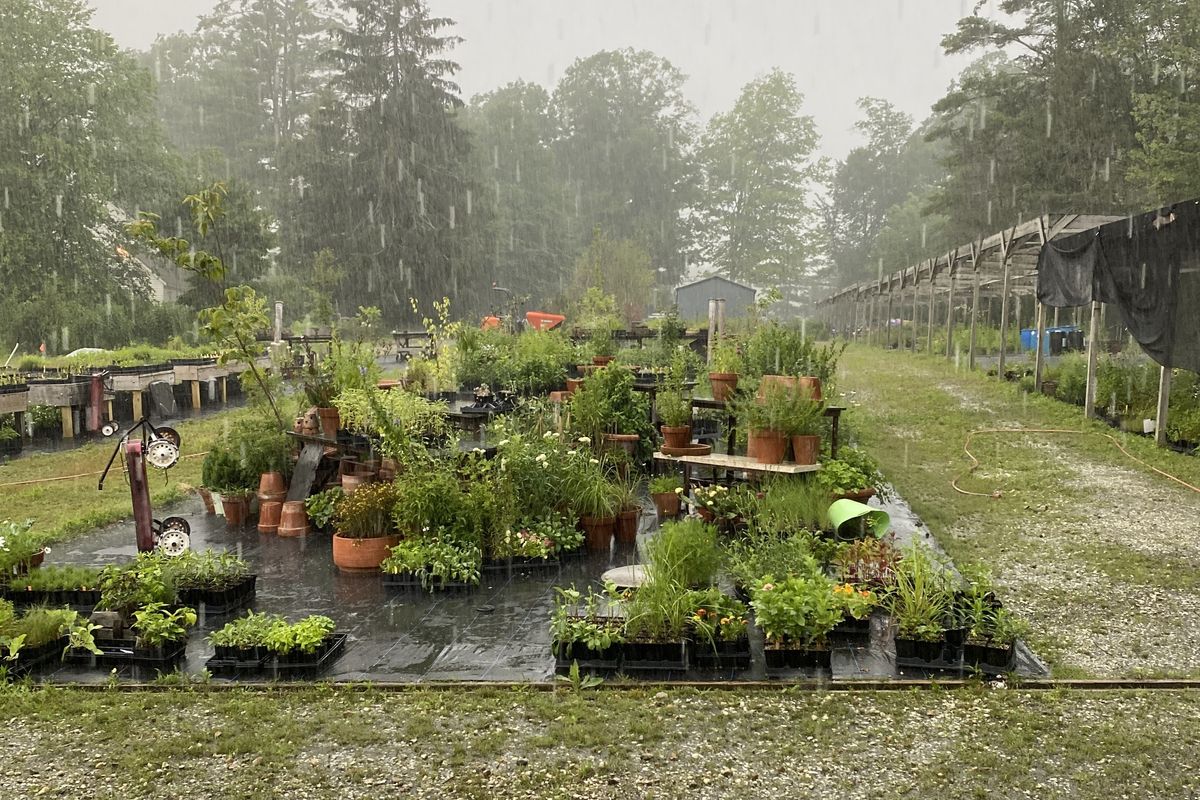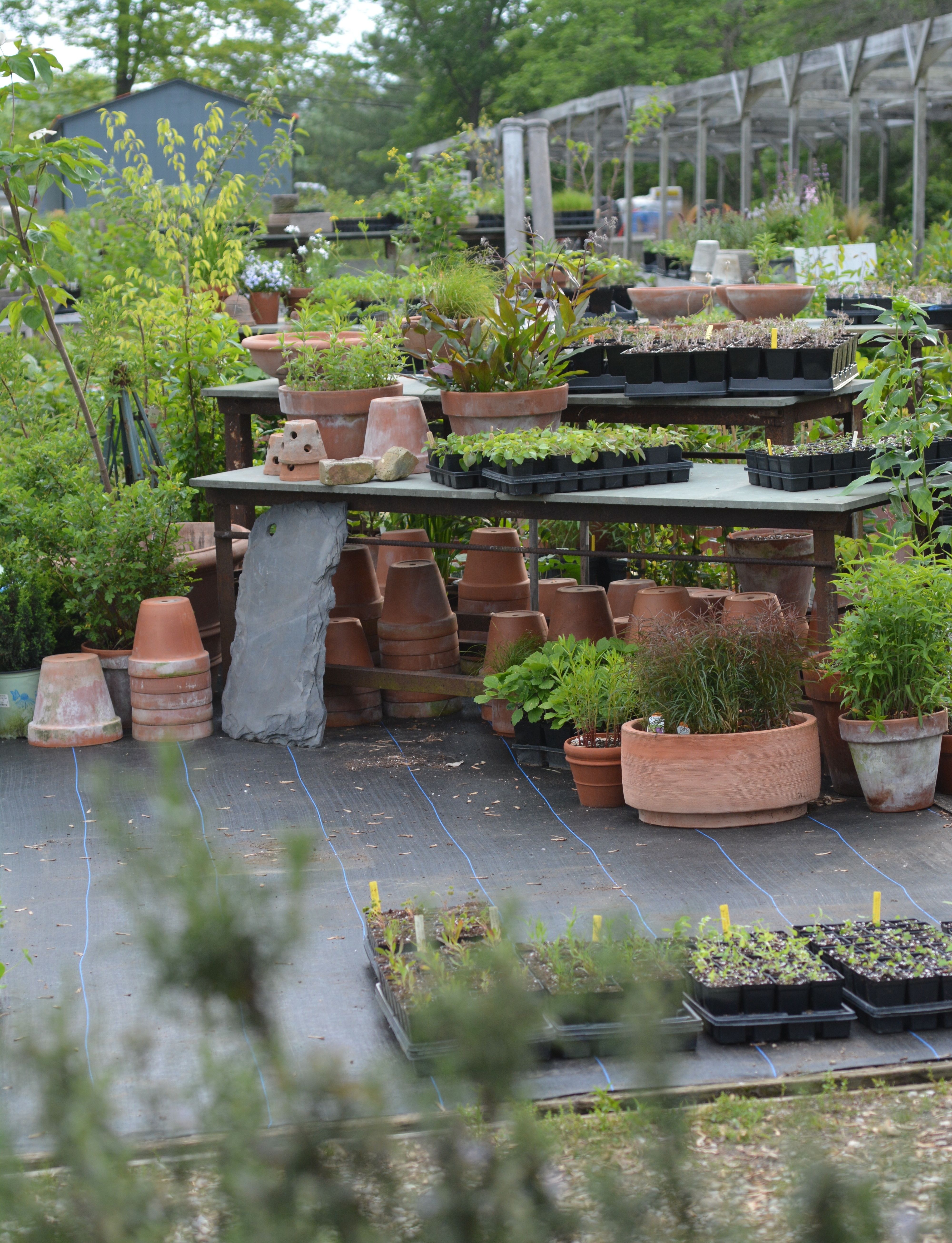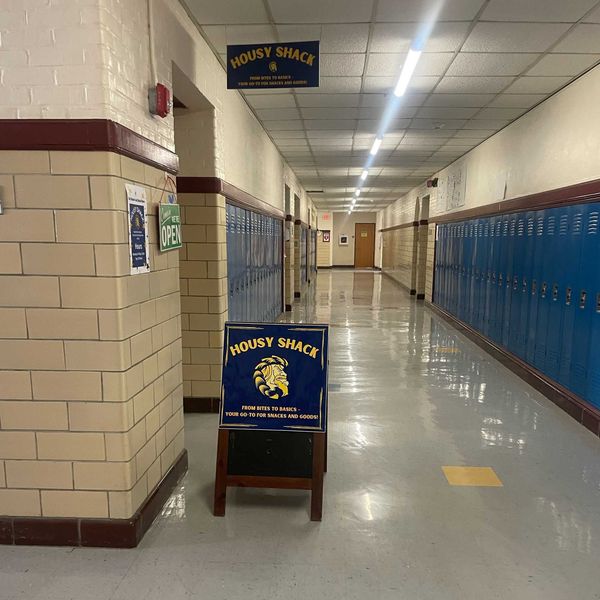The Ungardener: by the books

Michele Paladino’s nursery, “Lindera” in Falls Village.
Dee Salomon

Michele Paladino’s nursery, “Lindera” in Falls Village.
It was a bit unfair, in my last column, to write a critique of a well-regarded plant reference book (“When the guide gets it wrong”) without recommending a satisfactory replacement or two.
As a novice gardener, I found plant selection — native or not — to be overwhelming and relied on website databases that let me enter soil, moisture, light and critter criteria, then return options I could research. Unsurprisingly, this yielded little garden satisfaction in situ. It may well be that it takes a little poetry to create a garden.
That’s where books come in.A well-written reference book can provide the kind of commentary that goes beyond a plant’s likelihood of survival in one’s garden.
Page Dickey’s (a well-known garden writer and landscape designer who lives in Falls Village) go-to on native plants is the three-volume set by Michael Cullina who led The Wildflower Society (now called The Native Plant Trust). Each book delves into different categories of plants: one on native trees, shrubs and vines (“one of my bibles” is the inscription on the opening page), another on native ferns, mosses and grasses and a third on wildflowers.
Dickey’s copies evidence of heavy use; in addition to hand-written commentary, there are check marks for the plants that she has either grown or identified. After a perusal, I looked more closely to get Cullina’s take on some of my favorite plants. While disappointed to find only one of the three types of aralias I admire — Aralia spinoza, the Devil’s Walking Stick — I was amazed to read about some fantastic species I didn’t know.
With their ease of use and combination of fact and considered opinion, the books function a bit like Dirr’s “Hardy Trees and Shrubs,” the subject of my last column. Unlike Dirr’s book — which ignores the role of native plants in maintaining habitats and glosses over the invasive tendencies of many plants that Dirr extolls — Cullina’s books help the reader understand the importance of specific plants and the roles they play in keeping our environments healthy for all animals, including us.
Doug Tallamy, the renowned entomologist and co-founder of Homegrown National Park, once provided data that was incorporated into the Native Plant Finder database for the National Wildlife Foundation. He stands by the practicality of digital databases for supplying information that can be updated as the environment continues to change.

Still, Tallamy is partial to a number of reference books and cited two he has relied on for years: “Native Plants of the Northeast” by Donald J. Leopold, and “Native Trees for North American Landscapes” by Guy Sternberg.
“They were among the early books I encountered when I started thinking about native plants,” said Tallamy. “They are rich in good photos, and they describe the conditions under which various species do well. I like Guy’s books in part because he does his best to talk about how they meet the needs of various animal species. No other book talks much about the insects that plants support because when they were written, we knew little about host plant associations.”
Much of what I’ve planted successfully in the past two years came at the recommendation of Michele Paladino, a plantswoman, landscape designer and proprietor of Lindera, a nursery specializing in native plants. She recently relocated the nursery to the former Falls Village Flower Farm.
Like Dickey and Tallamy, Paladino also turns to a few essential sources. “When I’m working on a project, I really want to ponder trees and their character. I always go back to books for inspiration.”
She, too, recommends Sternberg’s book as a go-to reference on trees, and highlights the two books by Carol Gracie on both Spring and Summer wildflowers. These two books delve more deeply into fewer plants — most, but not all, native — pointing out the insects and birds that they attract and including hand-drawn illustrations.
I was surprised to see two pages dedicated to broadleaf helleborine, a non-native orchid I’ve had my eye on in the woods for a while. Gracie argues both for and against this plant; her verdict is: pull them out.
Although she would not want to be characterized this way, Paladino is the best kind of human reference guide to native plants, sharing both essential plant information and her editorial perspective.
With Fall planting season at our doorstep, I recommend a visit to her nursery, located where the Falls Village Flower Farm used to be. Come with questions, as Paladino likes to consult and collaborate with clients.
There is always lasting affection for books that sparked our curiosity for a lifelong passion. The books Dickey, Tallamy and Palladino recommend were last published a couple of decades ago. They recognize that they are trading some up-to-date accuracy of information for prose that inspires and provokes — sentiment is preferred.
Might publishers reissue these books in digital form? That would allow for contemporary updates on plant diseases, soil chemistry changes and invasive species associated with climate change — as well as the resulting species decline we, and entire ecosystems, are rapidly experiencing.
Done well, it could thread the needle between accuracy and allure.
Dee Salomon ‘ungardens’ in Litchfield County.
The Community Closet at HVRHS is open for students to take clothes for any reason during the school day.
What started with one unexpected donation of clothes has grown into a quietly impactful resource for all students at HVRHS: the Community Closet. Now located in a spacious area above the cafeteria, the closet offers free clothing to any student for any reason.
The idea began a few years ago when a community member reached out to the former superintendent wondering if anyone at the school could benefit from used clothing that would otherwise go to waste. The superintendent then got in contact with Rachel Novak, the school social worker. “Once I had all those bags of clothes in my room, I was like, ‘I should put this in a space,’” Novak said. Her simple idea eventually became a full-sized closet accessible to all students.
From the beginning, Novak envisioned the closet as an inclusive space. “It’s open to anybody, it’s not just based on economic needs,” she said. Sustainability also plays a role. “Thinking about the environment, some students like to thrift and just get clothes that way,” Novak said.
After the initial donation, contributions continued to grow. “I reached out to our staff members and faculty,” Novak said. The most consistent donations come from the faculty at HVRHS and a few community members who learned about the closet. Finding teenage-appropriate clothes has been a challenge. “I get a lot of donations that are nice, but I don’t think teenagers would want to wear them,” Novak said.
Another ongoing obstacle has been awareness. Many students don’t know the closet exists at all. “That’s been the hard part,” Novak said. “Getting it out to the wider community of the school.” Novak is looking for students and staff to spread the word. “It helps because our school nurse knows and other faculty members,” she said. “When they know a student needs something, they just bring them up.”
Looking ahead, she hopes to promote the space more actively. “When we come back from this break, I do plan to … get fliers and all that up and going,” Novak said. There may even be an upcoming expansion — she has discussed the possibility of turning part of the area into a food pantry. “That would be more of a need-based system for students,” she said. “But right now, promoting it is where I’m at.”
The Community Closet is well-stocked currently. “Just because of the amount of clothes I have, I’m not accepting any more donations until I clear some stuff out,” Novak said. She is still willing to make room for more fashionable, teen-friendly items donated by students. “That way I’ll have more teenager approved clothes.”
Above all, she wants students to know that no one is limited to using the space. “Sometimes there’s a stigma around it … like, ‘I don’t need help. I don’t want to take away from anybody else that may need it,’” Novak said. Due to the amount of clothes, students should feel welcome to use the closet for any reason. Some students even grab items last minute for sports and activities. “It’s important for kids to know it’s for everyone.”
Whether a student wants to thrift clothes sustainably, forgot to pack clothes for an after-school practice, or is in need of a new outfit, the Community Closet is a resource for all.
Sophomore Eliana Lang enjoys her Housy Shack cookie.
Now in its second year, the Housy Shack is a hit among students. The special education department-run store that sells warm cookies, drinks and other snacks to students and teachers draws people to a room in the back hallway every time it’s open.
The smell of warm cookies welcomes visitors to the store with snacks, drinks and even Housy merchandise for sale. The cookies are definitely the favorite, sometimes lines go out the door to get one before they sell out.
The cookies are so popular that the store had to increase prices from 50 cents to a dollar and implement a four cookie per person maximum. The Shack sells about 40-100 cookies per day and has about 20-60 HVRHS customers visiting per day.
Julie Browning and Heather Strid, two of the HVRHS faculty members that help run the Shack, said their goal was to create real-world job experiences as well as real-world shopping experiences for students at HVRHS. “Learning the skills to work in the world can be taught in a classroom, but the lessons are more meaningful and valuable when they are applied in real work situations, which is what we create through the school store,” Browning said.
The original purpose for the store seems to be working, as several students are learning important skills. Students said the store taught them skills like counting money, checking inventory and cleanliness along with social skills and customer service that could help in the professional world after high school.

As the store quickly became a hit, organizers were faced with the challenge of finding funding. “When we started planning to start the school store two years ago we needed money to buy equipment, supplies and food to start it up but were not sure how to get it,” Browning said. “Mrs. Strid came up with the idea of applying for a grant from the 21st Century Fund to help us get started and they were so generous.” That grant has been crucial to the success and growth of the school store.
Not only does the Housy Shack benefit the special education department, students said it fosters a sense of community throughout the school. “School store cookies are my favorite thing ever. They brighten up my day,” said Eliana Lang, a sophomore at HVRHS. Dayana, one of the student staffers at the Housy Shack, said her favorite part of working in the school store is when students come in to make purchases. She enjoys talking to them and ringing up their orders on the cash register. The Housy Shack brings people together and offers the opportunity for students to connect with each other.
As the school year continues, the members of the school store look forward to expanding their inventory by creating and selling a variety of Housy merchandise — t-shirts, sweatshirts, water bottles, and more. “I have had several students put in requests for certain hats, key chains, etc. … so there will be more of that to come,” Browning said. Last school year, profits were all invested back into the school store. “This year we are hoping to make more of a profit and will look to use the money that we make for field trips, outings as well as opportunities to donate and give back to the community,” Browning said. They also would like to use the school store to fundraise for other causes. “Right now we are collecting donations for The Little Guild Animal Shelter, so if anyone has pet supplies they would like to donate please drop them off in exchange for a cookie,” Browning said.